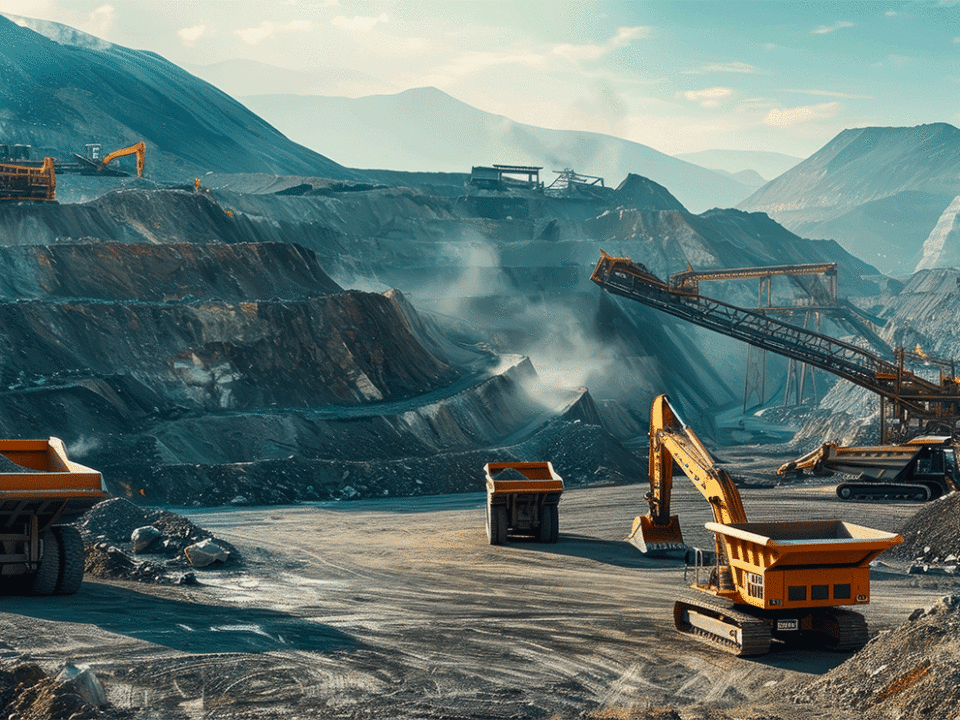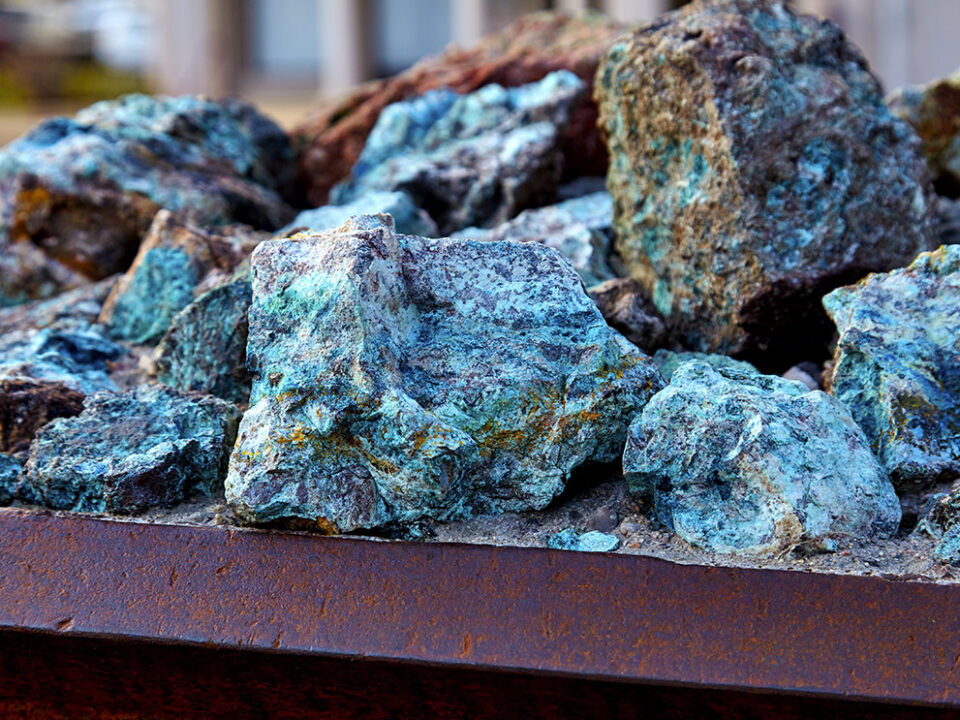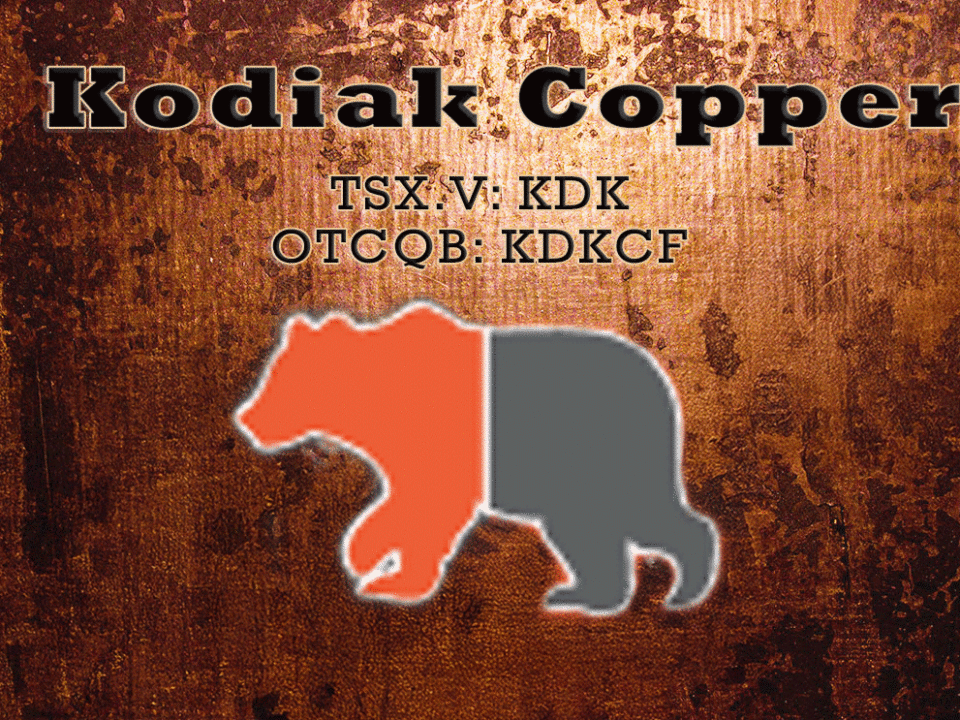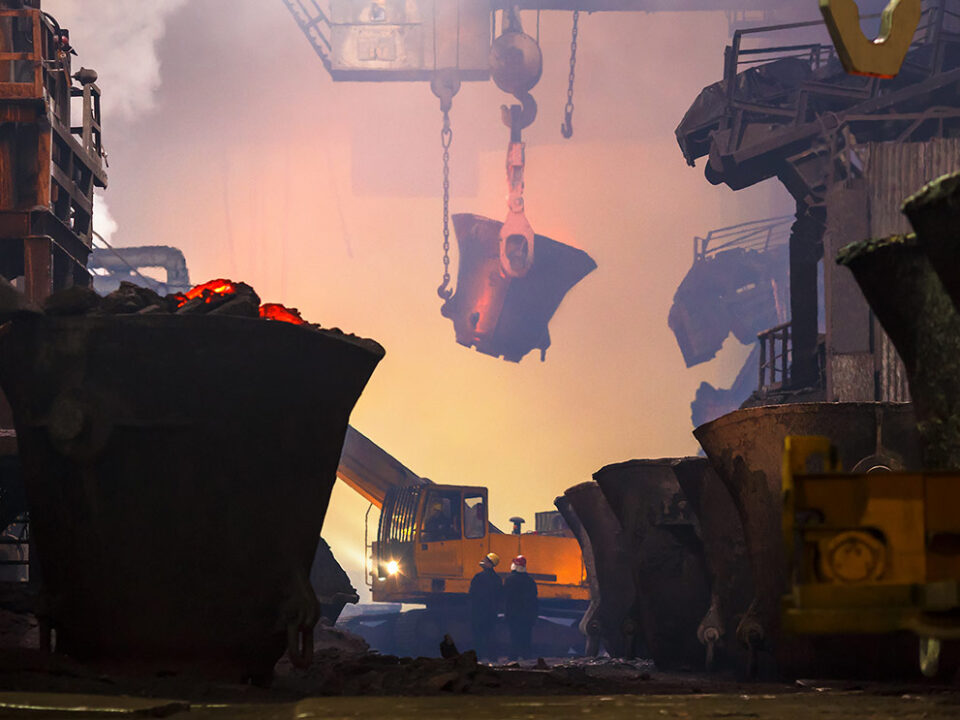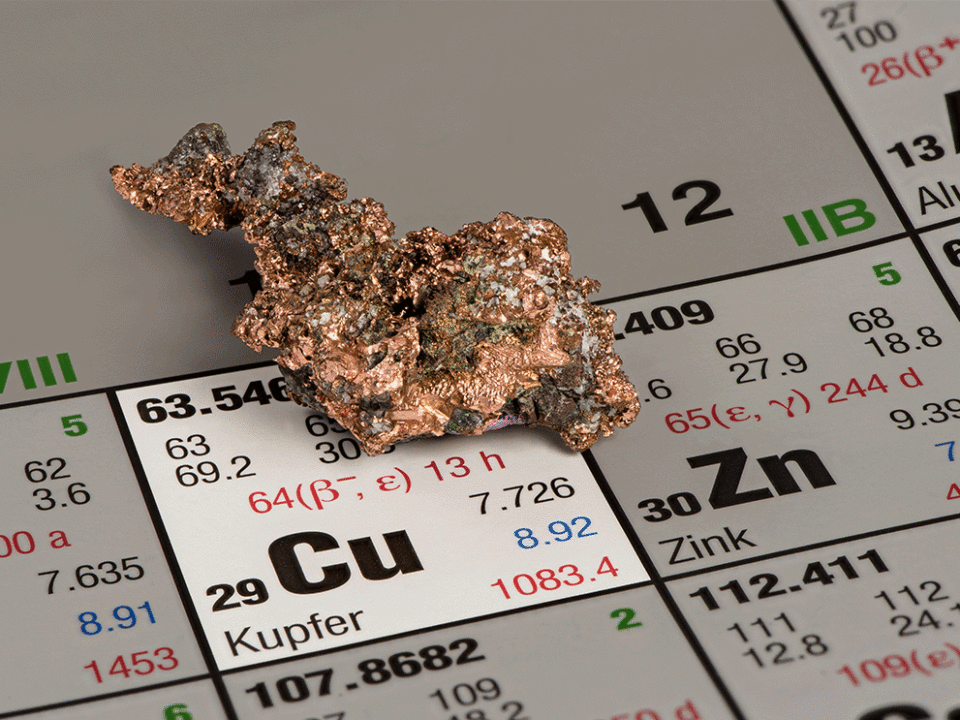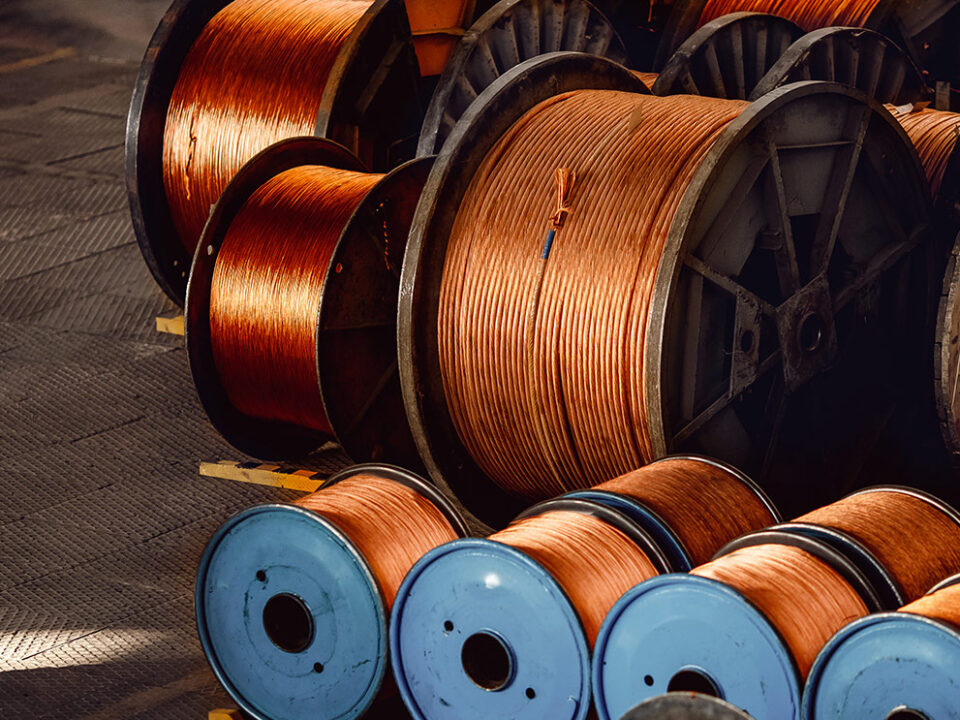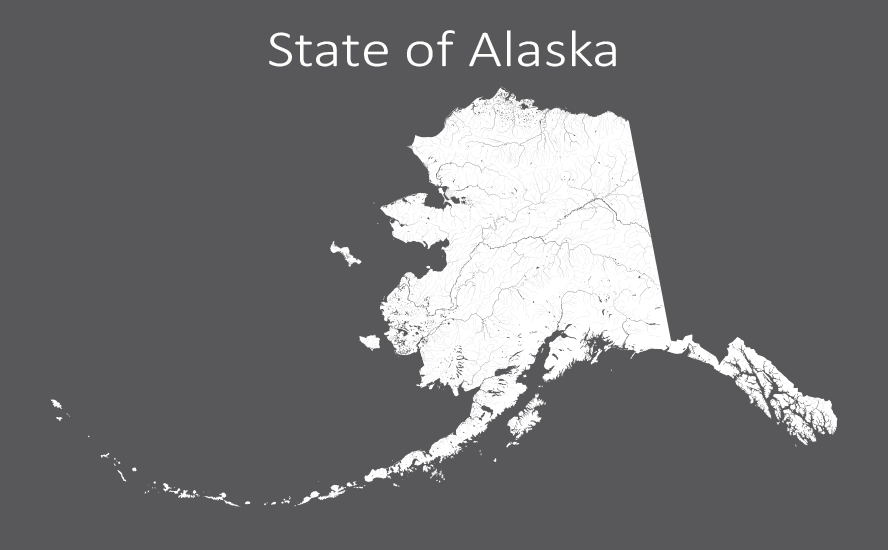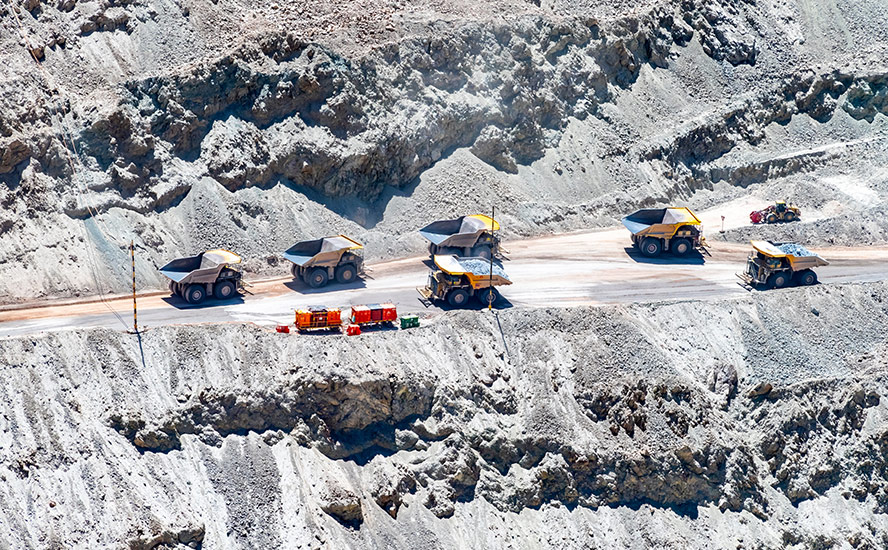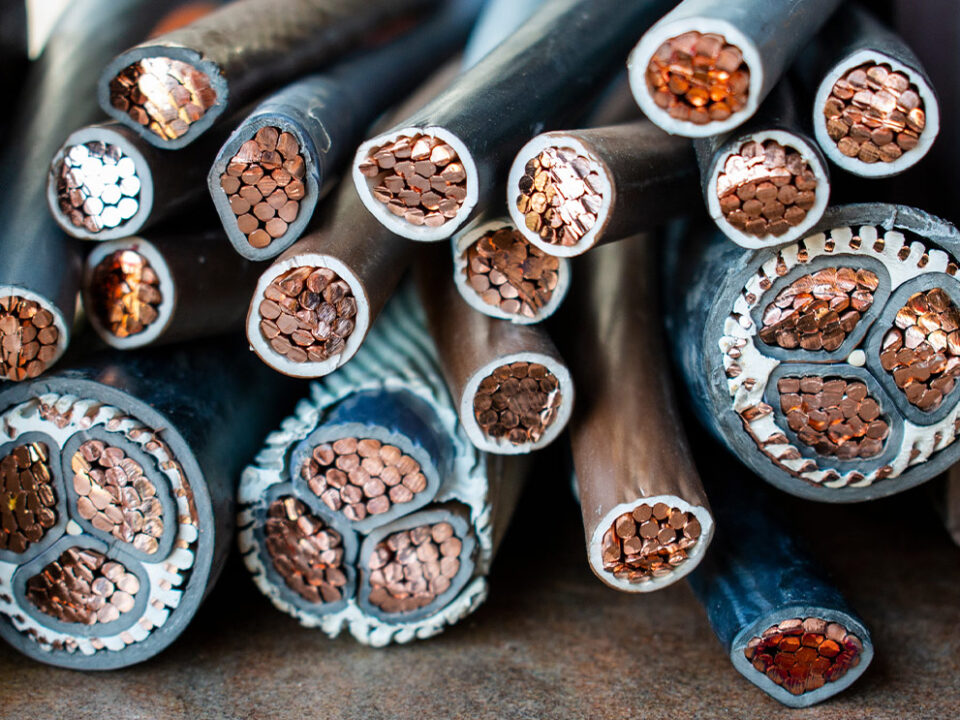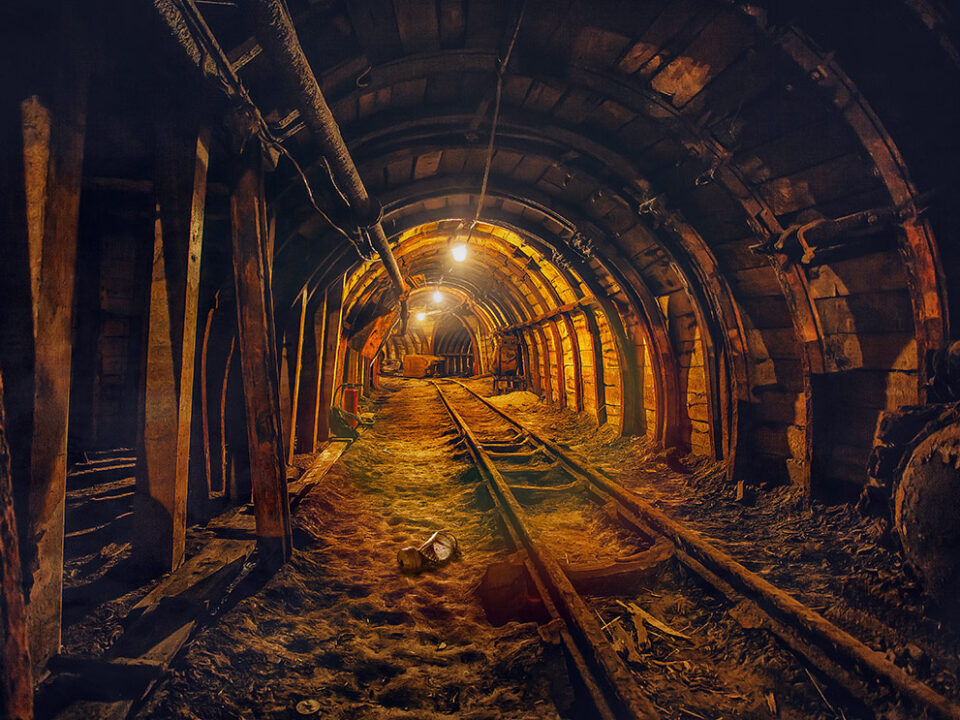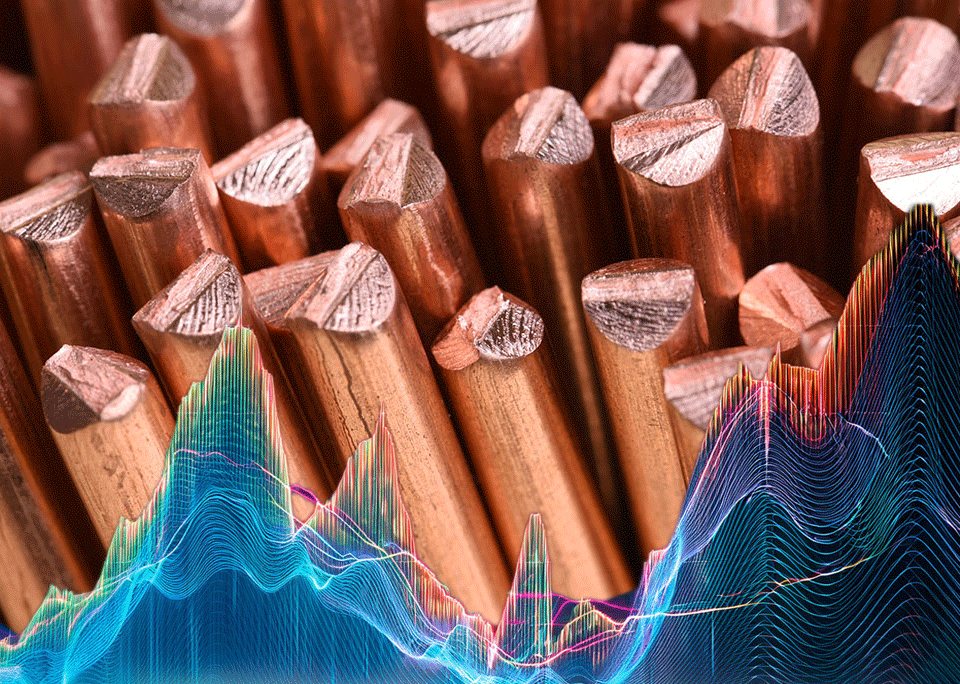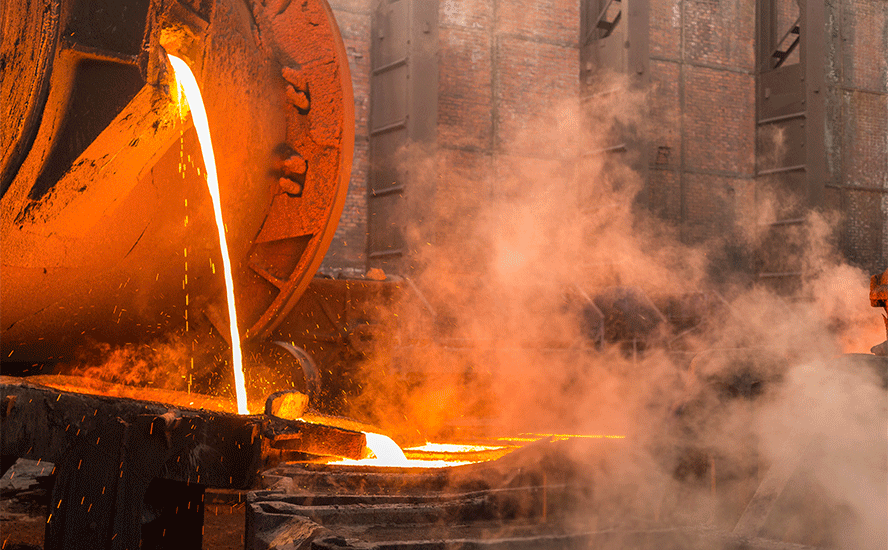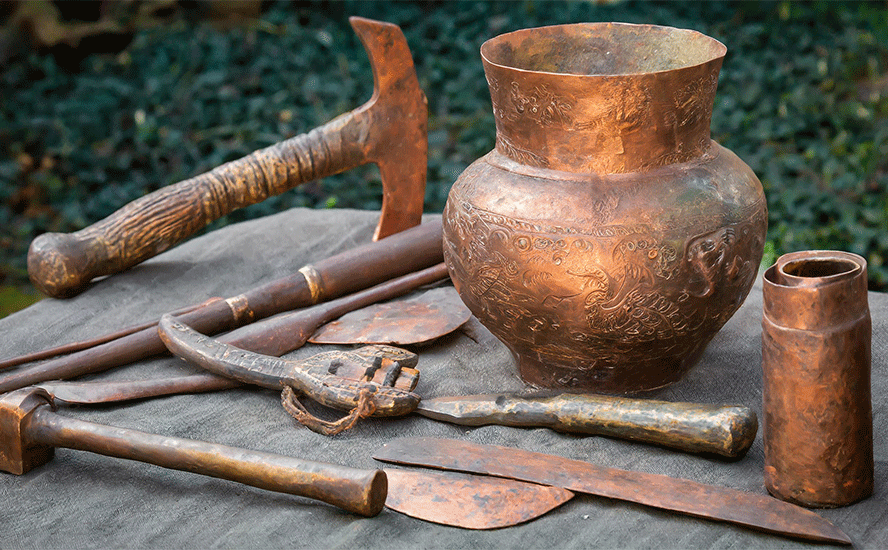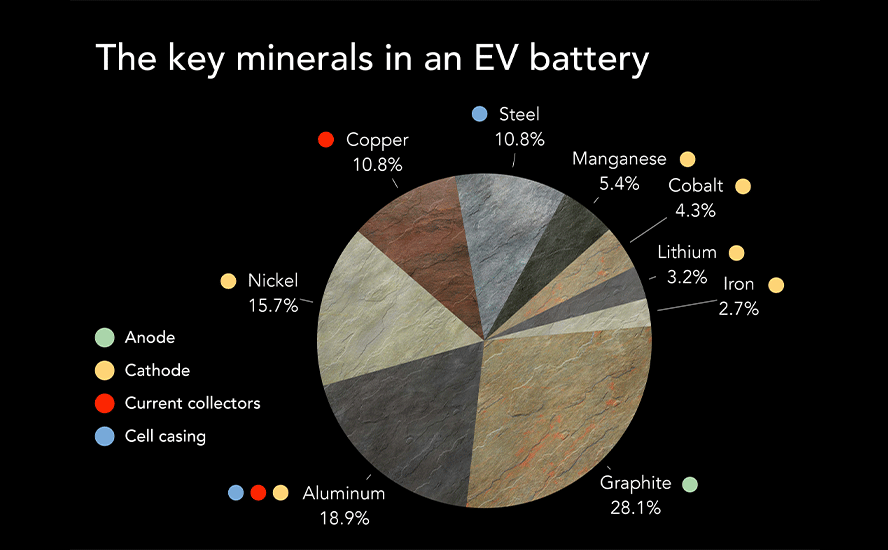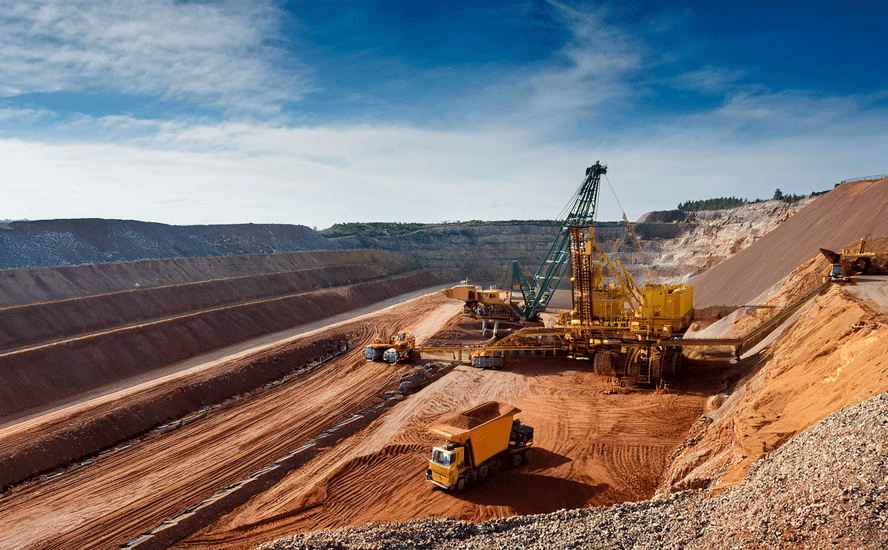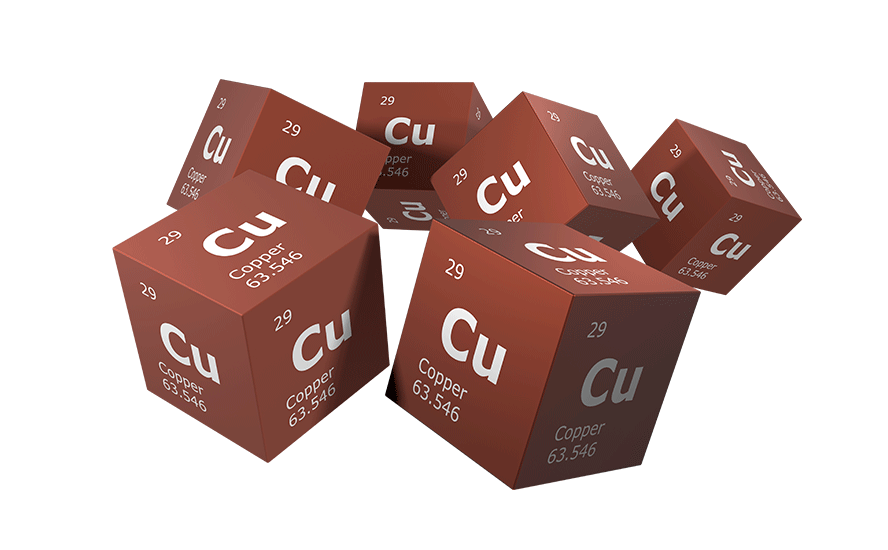Graphite One collaborating with Chinese lithium-ion battery company to build graphite manufacturing facility in Washington State
2022.05.05
Graphite One (TSXV:GPH, OTCQX:GPHOF) is aiming to become the first vertically integrated domestic producer to serve the nascent US electric vehicle battery market.
The Vancouver-headquartered company this week announced a memorandum of understanding (MOU) with Sunrise (Guizhou) New Energy Material Co., Ltd., a lithium-ion battery anode producer based in Guizhou Province, China. Sunrise is a subsidiary of Global Internet of People, Inc., an online knowledge sharing and enterprise service platform that trades on the Nasdaq under the symbol SDH.
Pursuant to the MOU, Sunrise and GPH plan to negotiatean agreement to form an alliance for the purpose of establishing a graphite material manufacturing facility in Washington State.
The plan for the materials facility — the second link in Graphite One’s US supply chain solution for advanced graphite products, mining is the first — will be detailed in the company’s prefeasibility study (PFS), expected in the first half of 2022.
What we know so far, is that Sunrise will help to design, construct and operate the plant, which will source natural graphite from Graphite One’s Graphite Creek deposit near Nome, Alaska. The plant is expected to turn graphite concentrates into 41,850 tonnes of battery-grade coated spherical graphite and 13,500 tonnes of graphite powders per year.
Graphite One’s third and final link in its 100% US-based graphite supply chain strategy involves battery materials recycler Lab 4 Inc. of Nova Scotia, Canada. Under an earlier MOU, GPH and Lab 4 will work collaboratively to design and build a recycling facility for end-of-life EV and lithium-ion batteries. Lab 4 provides laboratory and engineering support to mining companies with a focus on recycling graphite, manganese and other minerals.
The recycling facility will be located next to the Washington State manufacturing facility and engineered to accept used EV batteries for feedstock.
Who is Sunrise?
Sunrise was founded by Global Internet of People, Inc. (SDH) to produce lithium-ion anode materials. Sunrise’s principals each have over 20 years experience in commercially supplying anode materials to major battery producers and are named on over 100 related patents.
Haiping Hu, Sunrise’s Chairman, and the CEO of SDH, began exploring lithium-ion battery materials in 1999 when he co-founded Shanshan Technology — the first company in China to produce anode materials for lithium-ion batteries on a large scale.
Du Huiyu, the general manager of Sunrise, has held senior management positions at several publicly listed companies in China in the lithium-ion battery materials industry. Zhang Dianhao, Sunrise’s chief engineer, has 30+ years experience in the lithium battery space.
“Having entered into this MOU with Graphite One, we are pleased to explore the potential opportunity to participate in North America’s fast-growing graphite materials market. Our potential collaborative partnership with Graphite One could help expand SDH’s global reach and expedite the execution of our growth plan,” said Hu, in the May 3 news release.
Sunrise produces 6,000 tonnes per year (tpy) of lithium-Ion battery anode materials and has an established research and development base. Its 100,000 tpy anode production facility is under construction in China’s Guizhou Province, with completion expected by the end of 2023. The main products include artificial natural graphite, composite graphite, and other anode materials.
“With the many gigafactories being built in the US, Sunrise is excited to enter into this MOU with Graphite One, with the largest natural graphite deposit in North America,” Sunrise Chairman Hu said in GPH’s April 6 news release. “We look forward to assisting Graphite One with the development of its planned anode facility to serve the American market at this critical moment in the transition to the low-carbon energy future we all seek.”
Key battery ingredient
The lithium-ion battery used to power electric vehicles is made of two electrodes — an anode (negative) on one side and a cathode (positive) on the other.
Metals like lithium, nickel, manganese and cobalt are all used as cathode material, and depending on the battery chemistry, there are different options available to battery makers.
Graphite is the only material that can be used in the anode, there are no substitutes. With its high natural strength and stiffness, graphite is an excellent conductor of heat and electricity. As the only other natural form of carbon besides diamonds, graphite is also stable over a wide range of temperatures.
Graphite is therefore indispensable to the global shift towards electric vehicles. It is the largest component in lithium-ion batteries by weight, with each battery containing 20-30% graphite. Due to losses in the manufacturing process, it actually takes 30 times more graphite than lithium to make the batteries.
According to the World Bank, graphite accounts for nearly 54% of the mineral demand in batteries. Lithium, despite being a staple across all batteries, accounts for only 4% of total demand.
The anode material, called spherical graphite, is manufactured from either flake graphite concentrates produced by graphite mines, or from synthetic/artificial graphite. Only flake graphite upgraded to 99.95% purity can be used.
An electric car contains more than 200 pounds (>90 kg) of coated spherical purified graphite (CSPG), meaning it takes 10 to 15 times more graphite than lithium to make a Li-ion battery.
An average plug-in EV has 70 kg of graphite, or 10 kg for a hybrid. Every 1 million EVs requires about 75,000 tonnes of natural graphite, equivalent to a 10% increase in flake graphite demand.
At least 125 million EVs are estimated to be mobile by 2030. That’s more than 8 million tonnes of additional battery-grade graphite needed this decade; the mining industry currently supplies 1.1 million tonnes.
The flake graphite feedstock required to supply the world’s lithium-ion anode market is projected to reach 1.25 million tonnes per annum by 2025, says Benchmark Mineral Intelligence, the leading price reporting agency for battery metals. At this rate, demand could easily outstrip supply in a few years.
Bloomberg New Energy Finance (NEF) expects demand for key battery minerals to remain robust through 2030, with graphite demand projected to increase four-fold.
As vehicle electrification continues, it is estimated that the natural flake graphite market could reach a deficit as early as 2023, with few new sources being developed around the world.
America’s graphite problem
Currently, the US has a list of 47 import-dependent minerals that it considers “critical” to its economic and national security, and out of those, 32 are produced by China and Russia.
Such a level of mineral dependence means the US will be under the thumb of its biggest rivals, unless it develops a reliable and sustainable supply chain. As for vehicle electrification, the nation already has a ways to go to secure enough minerals to achieve its goals.
Among the minerals key to winning the global EV race, graphite arguably is most significant and should be a top priority for the US, given it is the essential ingredient in electric vehicle batteries, as explained above.
A reliable EV supply chain not only requires domestic production of graphite, but also the capacity to process the raw material into battery-grade, which is why a fully integrated supply chain, for any major auto market, is so important.
This is where the US could be left in the dust as it continues to play catch-up in the EV race. For starters, natural graphite material is very difficult to source. Only about 20 countries make up the world’s supply, many of which produce insignificant amounts (<10,000 tonnes a year).
China is by far the biggest producer with nearly 80% of the world’s graphite production. Due to weak environmental standards and low costs, China also controls almost all graphite processing, establishing itself as a dominant player in every stage of the supply chain.
After China, the next leading graphite producers are Brazil, Mozambique, Russia and Madagascar. The US, on the other hand, produces no graphite, therefore must rely solely on imports to satisfy domestic demand.

A burgeoning EV sector means that the level of import dependence has increased over the years.
From 2016 to 2018, US graphite imports nearly doubled from 38,900 tonnes to 70,700 tonnes. Although imports have leveled off in recent years, the numbers are still substantial and alarming for the future of America’s EV economy.
According to the USGS, in 2021 the US imported 53,000 tonnes of natural graphite, of which about 57% was flake and high-purity, 42% amorphous, and 1% lump and chip graphite. The top importers were China (33%), Mexico (21%), Canada (17%) and India (9%)
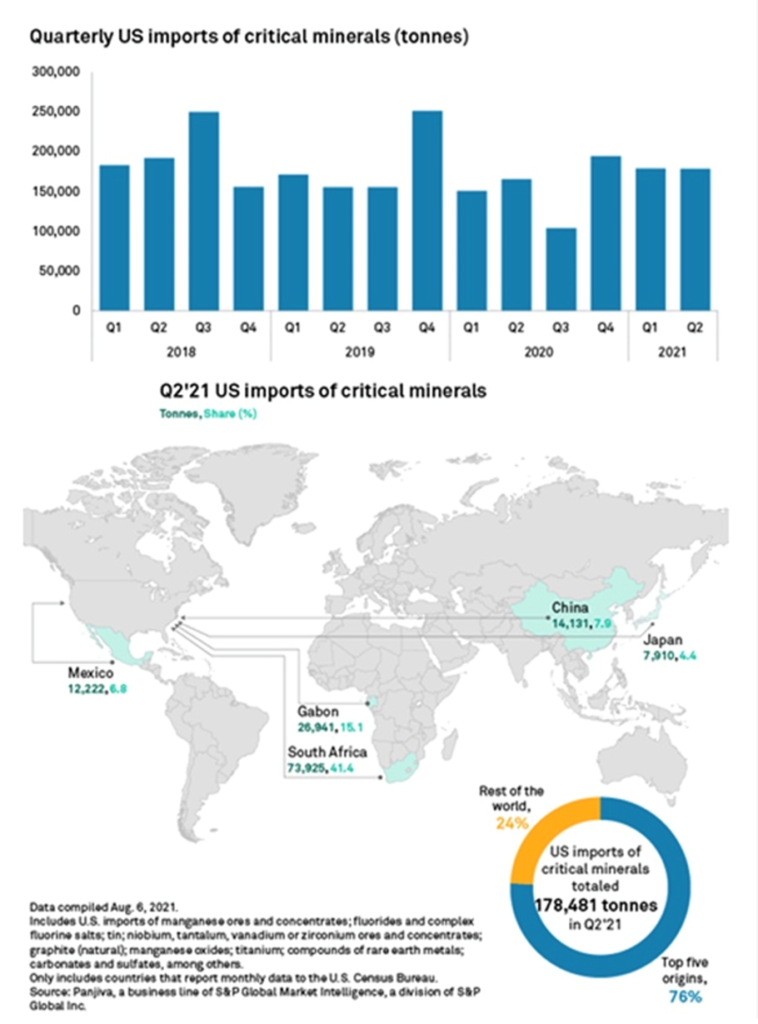
But taking into account the fact that China, its main competition, controls all graphite processing, the US is actually not 33% dependent on China for its battery-grade graphite, but 100%. This is a precarious position to be in should it wish to stay in contention for EV dominance, and it could only worsen as demand for battery minerals grows.
This is where Graphite One’s MOU with Sunrise becomes important.
“It is well understood in the North American graphite development sector that battery anode process expertise resides in China,” says Anthony Huston, CEO of Graphite One. “As Graphite One works to develop North America’s first complete advanced graphite material supply chain, the technical acumen Sunrise can provide, could allow us to optimize our processing capacity and ensure our new U.S.-based facility is purpose-built from Day One to the highest industry standards.”
It’s estimated that increased use of lithium-ion batteries could gobble up well over 1.6 million tonnes of flake graphite per year, posing a serious threat to the global supply chain as the material is used in a variety of industries (global consumption of graphite for all uses reached 2.7 million tonnes in 2020).
Data from Benchmark Mineral Intelligence shows demand for natural graphite from the battery segment amounted to 400,000 tonnes in 2021, with that number expected to scale up to 3Mt by 2030.
Meanwhile, the world’s mine supply has been stagnant over the years. Between 2018 and 2019, total production actually declined by 20,000 tonnes. Global production in both 2020 and 2021 was nearly exactly the same, at a million tonnes.
A global graphite shortage is a matter of when, not if, without new supply. For the US, which is 100% dependent on foreign imports of the material, it’s a ticking time bomb that could completely derail the nation’s vehicle electrification and decarbonization ambitions.
This all goes back to the importance of establishing a reliable, secure and sustainable “mine to battery” EV supply chain, beginning with a domestic graphite source and integrating it with processing, manufacturing and recycling to create a full circular economy.
Graphite Creek: High-Priority Infrastructure Project (HPIP)
Graphite One’s Graphite Creek property is situated along the northern flank of the Kigluaik Mountains, Alaska, spanning 18 kilometers.

Located on the Seward Peninsula, Graphite Creek in early 2021 was given High-Priority Infrastructure Project (HPIP) status by the Federal Permitting Improvement Steering Committee (FPISC). The HPIP designation allows Graphite One to list on the US government’s Federal Permitting Dashboard, which ensures that the various federal permitting agencies coordinate their reviews of projects as a means of streamlining the approval process.
In other words, having HPIP means that Graphite Creek will likely be fast-tracked to production, while of course adhering to the necessary regulations that are integral to developing any new mine in the US.
In the Jan. 19, 2021 news release, Graphite One stated, The Federal Permitting Dashboard ensures that federal permitting agencies coordinate their project review authorities, resulting in a more efficient process, with more transparency for state agencies and the public. This designation does not remove any of the stringent environmental standards or permitting requirements necessary for the Graphite Creek project and enhances Graphite One’s ongoing commitment to local stakeholders for a transparent and thorough permitting process.
“Designating the Graphite Creek project as a high-priority infrastructure project will send a strong signal that the US intends to end the days of our 100% import-dependency for this increasingly critical mineral,” Alaska Governor Mike Dunleavy said in his nomination letter.
Largest graphite deposit in the US
The US Geological Survey has cited Graphite Creek as the largest known graphite deposit in the country.
The recently updated USGS mineral database highlighted 10 sites with historical graphite production or undeveloped graphite resources (>1,000 tonnes of contained graphite resources and/or past graphite production).
Sites were identified in Alaska, Alabama, Colorado, Montana, New York, Pennsylvania and Texas. Of these, only Graphite Creek contains more than 8 million tonnes of graphite, confirming Alaska Governor Mike Dunleavy’s previous statement that this “would be a superior domestic supply of this critical mineral.”
The survey’s involvement is a huge confidence-builder for Graphite One. The organization sent geologists to the property last year to conduct field work, leading them to assess Graphite Creek as the biggest graphite deposit in the continental United States.

Exploration
During 2021, Graphite One completed a drill program of >2,000 meters on the Graphite Creek property, the results of which will be used for an updated resource model. To date, only 20% of the graphite mineralization trend has been explored by the company.
The latest resource estimate (March 2019) — derived from drilling only less than 30% of the Graphite Creek mineralization — showed 10.95 million tonnes of measured and indicated resources at a graphite grade of 7.8% Cg (graphitic carbon), for some 850,000 tonnes of contained graphite. Another 91.9 million tonnes were tagged as inferred resources, with an average grade of 8.0% Cg containing 7.3 million tonnes.
A Preliminary Economic Assessment (PEA) on Graphite Creek supports a 40-year operation with a mineral processing plant capable of producing 60,000 tonnes of graphite concentrate (at 95% purity) per year.
Once in full production, Graphite One’s proposed graphite materials manufacturing plant is expected to turn graphite concentrates into 41,850 tonnes of battery-grade coated spherical graphite and 13,500 tonnes of graphite powders per year.
This level of prospective production cannot be ignored, given it would cover the amount of US graphite imports in most years.
The next steps for Graphite Creek will include an updated resource model and new technical data for a Prefeasibility Study (PFS), which will incorporate results of the 2021 drill program.

Circular economy
This year, Graphite One proceeded with the second link of its proposed supply chain strategy by selecting a location for the graphite products manufacturing plant. Now, with a recycling facility planned nearby, the company has essentially closed the loop on its “circular economy” blueprint, much like the one being advocated by the Biden administration.
The administration allocated $6 billion as part of a huge infrastructure bill aimed at developing a US battery supply chain and weaning the auto industry off its reliance on China. In a July 2021 report, the White House said the number of mineral commodities for which the US is reliant on imports for more than a quarter of demand, has jumped to 58 from 21 in 1954.
Biden is reportedly invoking War powers to encourage domestic production of critical minerals for batteries. White House discussions involve adding battery materials to the 1950 Defense Production Act, previously used by President Harry Truman to make steel for the Korean War, and by President Trump to spur production of masks during the pandemic.
An un-named source told Bloomberg that adding minerals like graphite, lithium, nickel, cobalt and manganese to the list could help mining companies access $750 million under the act. The presidential directive would fund production at current mining operations, productivity and safety upgrades, and feasibility studies.
Huston reacted to President Joe Biden’s April 1 announcement that graphite and other critical battery materials are designated as “essential to national defense” under the Defense Production Act, by noting that unlike presidential orders, designations under the DPA carry the full force of law.
“With this new defense designation under U.S. law, graphite joins a select group of ‘super-critical minerals’ that are essential to commercial technology and national security applications,” said Huston. “This action by President Biden validates Graphite One’s strategy of creating a full supply chain for advanced graphite materials located in the United States.”
Government-industry collaboration
In late February, the Biden administration announced it would conduct a government review of US supply chains to seek to end the country’s reliance on China and other adversaries for crucial goods.
Fortunately, there are a growing number of US politicians who want to reverse this dependency, they like the idea of developing domestic critical metal mines, and are working with the mining industry to achieve results.
In March, Senators Lisa Murkowski (R-AK) and Joe Manchin (D-WV), former and current chairs of the Senate Energy and Natural Resource Committee, sent a letter to President Biden urging him to make a DPA Title III designation to “invoke the Defense Production Act to accelerate domestic production of lithium-ion battery materials, in particular graphite, manganese, cobalt, nickel, and lithium.”
In a press release, Sen. Murkowski stated: “This is an overdue step that will help address one of our nation’s most significant vulnerabilities, our increasing dependence on foreign supply of critical minerals. While there are a range of actions we should be taking to address this challenge, including further federal permitting reforms, the Defense Production Act is an important complement to them.
“My hope is that this decision marks the start of a much more serious emphasis on our nation’s mineral security, and that real projects, especially mines, in states like Alaska, result from it. It is also critical that the five minerals addressed under this decision are just the start, not the end, of federal efforts to rebuild our domestic supply chains.
Murkowski helped draft the bipartisan infrastructure bill passed last November by the Senate.
The $1.2 trillion proposal includes money for research and demonstration projects and other efforts aimed at lessening the reliance on China for the supply of critical minerals like lithium and graphite.
Another provision calls for streamlining the permitting process for mining and extracting critical minerals. It can take up to 20 years to line up the federal permits needed to open a mine, making businesses hesitant to deploy investment capital.
At the Clean Energy Week Policy Makers Symposium, last September, Sen. Murkowsi said, “If they, Graphite One, were able to open tomorrow the US could go from being fully reliant on foreign countries for our graphite to Graphite One being able to supply nearly all our graphite demand.” Listen to the speech
The Alaska senator also called Graphite One’s fully integrated process of mining and producing graphite products “a very exciting project.”

Murkowski isn’t the only US politician to support Graphite One’s bid to become America’s number one source of battery-grade graphite, and the overarching theme of making the United States critical minerals-independent.
When new Secretary of Energy Jennifer Granholm testified in her nomination hearing in the Senate, she had a detailed back and forth with Sen. Murkowski on critical minerals issue, before distilling the main point into a simple yet strong statement: “We can buy electric car batteries from Asia, or we can make them in America.”
Sec. Granholm is used to breaking through barriers and agitating for change. She is only the second woman to lead the US Department of Energy and was the first woman elected Governor of Michigan, serving two terms from 2003 to 2011.

Funding for critical minerals
Not only are well-placed politicians talking up critical minerals, support in the form of government funding is beginning to materialize. The Department of Energy under the Trump administration is credited for issuing new guidance for applicants to its Loan Programs Office, stating a preference for projects related to critical minerals.
The new guidance concerns two LPO programs: the Title XVII Innovative Technology Loan Guarantee Program and the Advanced Technology Vehicle Manufacturing (ATVM) Loan Program.
Over $40 billion in loans and loan guarantees are available through the two programs, which together have backed more than $30 billion in deals over the past decade, including large-scale solar farms, electric vehicle manufacturing, electric transmission and nuclear energy.
Biden’s recent invocation of the Defense Production Act is expected to untap a torrent of funds for activities required to build mines, including feasibility studies.
The president has reportedly asked Congress for $500 million to help expand domestic production of critical minerals, part of an additional $33 billion ask to help Ukraine in its war against Russia. The half a billion would go to the Department of Defense for use under the Defense Production Act.
Another $3 billion is being tapped to support domestic manufacturing of batteries used in electric vehicles and energy storage. This money comes from the above-mentioned $1.2 trillion infrastructure bill signed into law last year, which earmarked funds for batteries and the creation of a US supply chain to produce them. A separate $60 million program for battery recycling is also being made available.
The Biden administration has an ambitious goal to electrify half of all new US cars by 2030.
“Positioning the United States front and center in meeting the growing demand for advanced batteries is how we boost our competitiveness and electrify our transportation system,” Energy Secretary Jennifer Granholm said in a statement.
“This will help to underwrite that private investment we need in the United States to build a reliable industrial capacity and, for the first time, have a domestic end-to-end supply chain in electric vehicles and electric vehicle battery production,” National Economic Council Director Brian Deese told reporters on a call Monday.
Critics says the government funding, and Biden’s use of the Defense Production Act to mine critical minerals, will have no impact on how fast mining projects take to get through the federal permitting process. Permitting is understood to be the biggest hurdle to approving new mines in the United States. It can take up to 20 years to advance a deposit from initial discovery to commercial production.
But here is where Graphite One’s Graphite Creek has an advantage over other projects.
Remember, Graphite Creek was granted High-Priority Infrastructure Project status last year by the Federal Permitting Improvement Steering Committee (FPISC), allowing its approval process to be streamlined.
Reflecting on the HPIP designation, Graphite One’s CEO Anthony Huston told The Northern Miner it highlighted that their project has dual interests for the American economy as it seeks to move forward:
“Our project was found to qualify under both the ‘renewable energy’ and ‘manufacturing’ sectors, which shows the versatility of natural graphite as a tech metal essential to the U.S. economy,” he said.
“You’ve seen the surge in attention that renewable energy is getting: electric vehicles, energy storage systems, lithium-ion batteries of all types. So getting the High-Priority designation is a very strong signal of the role our project will play in the US’s 21st century technology development.”
With the US almost entirely dependent on imported graphite, Huston told the Miner he believes the Graphite Creek project is essential.
“We’re seeing strong statements on the importance of the renewable energy transition, and an understanding that materials like the advanced graphite we plan to produce are essential to that renewable transition.”
Conclusion
Graphite Creek, confirmed by the USGS as the largest graphite deposit on US soil, presents an ideal solution for America’s graphite problem.
The fact that Graphite One now has graphite processing expertise, through its recent agreement with Sunrise, a Chinese lithium-ion battery anode producer, bolsters confidence among investors that GPH will be successful in the design, construction, and operation of Graphite One’s proposed US-based graphite material manufacturing facility.
Remember, it is well understood in North America that battery anode processing expertise resides in China. Why not therefore partner with a Chinese company that already has this knowledge, and whose principals have over 20 years experience supplying anode materials to major battery producers?
In developing the largest graphite mine in the US, and with plans to build an anode manufacturing facility and a recycling plant in Washington State, Graphite One is now perfectly positioned to become America’s first fully integrated graphite supply chain.
The support from government here is key. Graphite One is the poster child for what can happen when bipartisan government and the mining industry work together.
Indeed, as it goes about developing Graphite Creek into a mine, Graphite One is providing the template for a brand-new circular economy that merges mine production of battery-grade graphite, with the processing and recycling of lithium-ion battery anode material needed for the future green economy.
Graphite One Inc.
TSXV:GPH, OTCQX:GPHOF
Cdn$1.58, 2022.05.04
Shares Outstanding 85.5m
Market cap Cdn$135.1m
GPH website
Richard (Rick) Mills
aheadoftheherd.com
subscribe to my free newsletter
Legal Notice / Disclaimer
Ahead of the Herd newsletter, aheadoftheherd.com, hereafter known as AOTH.
Please read the entire Disclaimer carefully before you use this website or read the newsletter. If you do not agree to all the AOTH/Richard Mills Disclaimer, do not access/read this website/newsletter/article, or any of its pages. By reading/using this AOTH/Richard Mills website/newsletter/article, and whether you actually read this Disclaimer, you are deemed to have accepted it.
Any AOTH/Richard Mills document is not, and should not be, construed as an offer to sell or the solicitation of an offer to purchase or subscribe for any investment.
AOTH/Richard Mills has based this document on information obtained from sources he believes to be reliable, but which has not been independently verified.
AOTH/Richard Mills makes no guarantee, representation or warranty and accepts no responsibility or liability as to its accuracy or completeness.
Expressions of opinion are those of AOTH/Richard Mills only and are subject to change without notice.
AOTH/Richard Mills assumes no warranty, liability or guarantee for the current relevance, correctness or completeness of any information provided within this Report and will not be held liable for the consequence of reliance upon any opinion or statement contained herein or any omission.
Furthermore, AOTH/Richard Mills assumes no liability for any direct or indirect loss or damage for lost profit, which you may incur as a result of the use and existence of the information provided within this AOTH/Richard Mills Report.
You agree that by reading AOTH/Richard Mills articles, you are acting at your OWN RISK. In no event should AOTH/Richard Mills liable for any direct or indirect trading losses caused by any information contained in AOTH/Richard Mills articles. Information in AOTH/Richard Mills articles is not an offer to sell or a solicitation of an offer to buy any security. AOTH/Richard Mills is not suggesting the transacting of any financial instruments.
Our publications are not a recommendation to buy or sell a security – no information posted on this site is to be considered investment advice or a recommendation to do anything involving finance or money aside from performing your own due diligence and consulting with your personal registered broker/financial advisor.
AOTH/Richard Mills recommends that before investing in any securities, you consult with a professional financial planner or advisor, and that you should conduct a complete and independent investigation before investing in any security after prudent consideration of all pertinent risks. Ahead of the Herd is not a registered broker, dealer, analyst, or advisor. We hold no investment licenses and may not sell, offer to sell, or offer to buy any security.
Richard owns shares of Graphite One Inc. (TSXV:GPH). GPH is a paid advertiser on his site aheadoftheherd.com
Legal Notice / Disclaimer
Ahead of the Herd newsletter, aheadoftheherd.com, hereafter known as AOTH.Please read the entire Disclaimer carefully before you use this website or read the newsletter. If you do not agree to all the AOTH/Richard Mills Disclaimer, do not access/read this website/newsletter/article, or any of its pages. By reading/using this AOTH/Richard Mills website/newsletter/article, and whether you actually read this Disclaimer, you are deemed to have accepted it.

